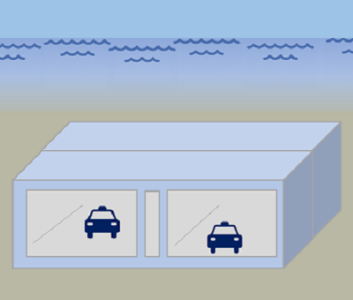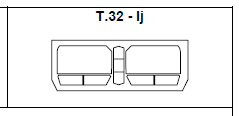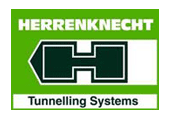Municipality of Amsterdam
Combinatie Bouw Ij-Tunnel (COBIJT) Joint Venture: Bataafse Aannemings Mij Nederlandsche Aannemings Mij Aannemersbedrijf v/h J.P. Broekhoven NV Tot Aanneming van Werken v/h H.J. Nederhorst Hollandsche Aannemersbedrijf Zanen en Verstoep Ways & Freytag AG, F
Department of Public Works Service in Amsterdam
90m (up to)
786m
23.63m
Project construction
9
Two tubes; two lanes in each tube
8.55m
23.9m
Two sections on precast piles were made in open excavation between sheet pile walls;
one section was made by means of four pneumatic caissons. Each of the immersed
sections was subdivided by two temporary joints and was supported on four pile caps
constructed in the dry at the bottom of the river under a pressurized air chamber.
one section was made by means of four pneumatic caissons. Each of the immersed
sections was subdivided by two temporary joints and was supported on four pile caps
constructed in the dry at the bottom of the river under a pressurized air chamber.
Started one element at a time then enlarged casting basin
to permit two at a time
to permit two at a time
Part of fabrication operation
in the casting basin
in the casting basin
Tunnel elements were pulled downward onto the two central pile caps, using multipart
lines. Water ballast was added to provide a negative buoyancy of 200 tons. The cables
were disconnected and jacking devices were installed by divers to pull the element in
and make initial gasket contract. The water pressure in the joint space was then
released to compress the gasket. The end sections were closed using exterior plates
with rubber gaskets, which permitted the joint concrete to be formed in a dry
environment.
lines. Water ballast was added to provide a negative buoyancy of 200 tons. The cables
were disconnected and jacking devices were installed by divers to pull the element in
and make initial gasket contract. The water pressure in the joint space was then
released to compress the gasket. The end sections were closed using exterior plates
with rubber gaskets, which permitted the joint concrete to be formed in a dry
environment.
Gina-type gasket
Elements were placed on cast-in-place caps described above.
Reinforced















